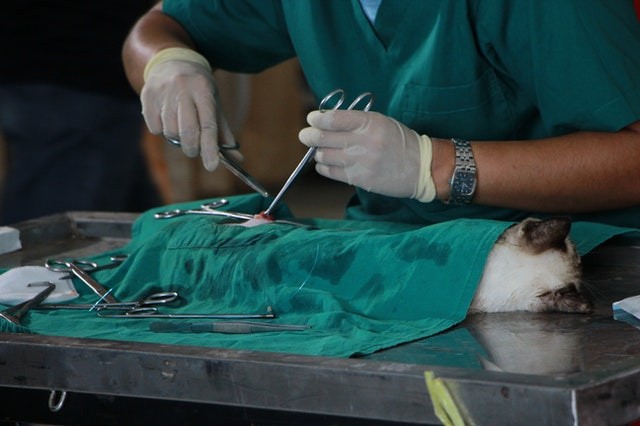A team of interdisciplinary researchers from the University of Arkansas is developing a surgical spoon for a safer veterinary procedure which is presently being tested clinically. The Faculty and students of from Dale Bumper College of Agriculture, Food and Life Sciences are working alongside the College of Engineers and the researchers on this project. The goal is to create a novel spoon that permits veterinarians to remove bladder stones from companion animals - which has always been a common procedure in the veterinary industry.

Learn More about the Research Team
The members of the team involved in this collaboration are Lauren Thomas; a doctor of veterinarian medicine and clinical assistant professor of animals; her student, Davina D'Angelo; an associate professor of biomedical engineering - Morten Jensen; and a research engineer and graduate student in Jensen's lab - Sam Stephens.
Through the collaboration of the renowned expertise and experiences of both Thomas and D'Angelo in veterinary medicine, with that if Jensen and Stephen's expertise in medical device design and manufacturing, the team has been able to produce a series of 3D printed spoons currently undergoing clinical testing by the local veterinary clinics. The reason for this is to effectively eradicate bladder stones in animals.
ALSO READ: The Only Animal That Can Live Without Oxygen
3D Printed Spoons
The 3D printed spoons created were optimized with computational simulations and mechanical testing. The team after establishing this great project is currently evaluating feedback from the clinics.
The idea to birth a veterinary tool that will bring ease to the procedure of bladder stone removal in companion animals had been birthed by D'Angelo, an honors student in her final year . She had approached Thomas about the idea in her sophomore, having spent a number of hours at a local veterinary hospital and paying close attention to a number of cystotomy surgeries. Thomas had reached out to Jensen to add engineering design expertise to the team.
Up until the development of the 3D printer spoon, the available method for many local veterinarians had been the use of traditional tableand teaspoon. Another method employed was flushing out with a urinary catheter infused in the urinary tract. These methods most tines still proved difficult, especially where the small stones are contained in the bladder and cannot be reached.

What Are Bladder Stones?
Bladder stones are hard masses of minerals in a bladder developed when the minerals in concentrated urine crystalize and form stones. This often happens when there's trouble in completely emptying the bladder.
According to D'Angelo, bladder stones are serious and life-threatening conditions that can affect a variety of animals, and the different methods not necessarily provide an effective means for complete removal of the stones. To this end, she had thought up this idea to help decrease the amount of time veterinary surgeons spend on performing surgical procedures, as well as the number of time animals, have to remain under anesthesia.
Crediting her mentors, she hinted that the experience garnered would help in her veterinary career as she has always aspired to create an impact on the standard of healthcare for companion animals.
For more news, updates about animal science and similar stories, don't forget to follow Nature World News!
© 2026 NatureWorldNews.com All rights reserved. Do not reproduce without permission.





